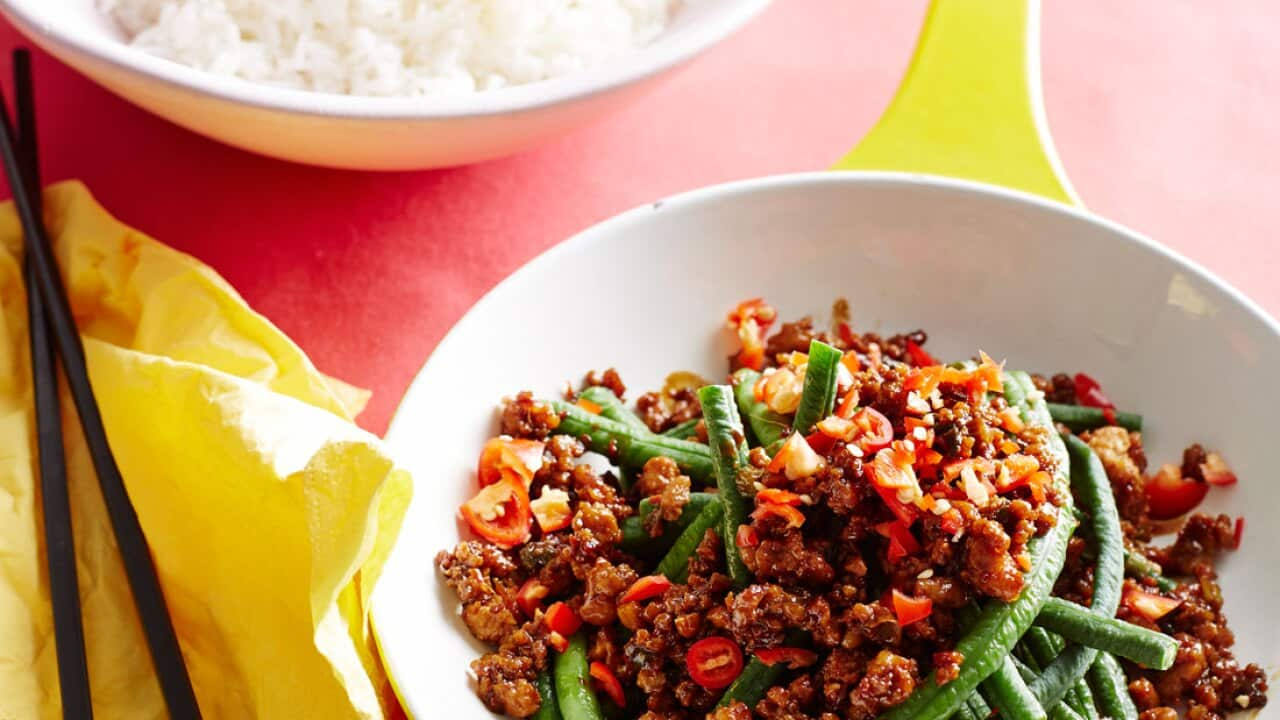Suan cai, a traditional pickled Chinese cabbage, is a popular dish in my hometown in Northeast China or Dongbei. Lots of popular Chinese dishes include suan cai, which is referred to as Chinese sauerkraut in the west because of the similarities between the two.
Suan cai in Dongbei is commonly braised to make a stew, stuff in dumplings or stir fry with vermicelli noodles and pork mince. I like to chop suan cai into my favourite fish dishes to make them nice and salty.
A SIDE FOR YOUR SALMON

Pan-fried salmon with dill butter
We normally pick Chinese cabbages to make suan cai, but you can also use bok choy or other soft green vegetables. My family in China buys lots of Chinese cabbage to make suan cai before winter hits. This is because winter is extremely cold in the northern part of China, causing the price of Chinese cabbages and other vegetables to rise. It's a win-win: they save money and can store a nutritious dish for the colder months in the freezer. To make suan cai, my grandma places bunches of Chinese cabbage outside and allows them to dry under the sun. She then puts the cabbage in a huge pot, mixes it with salt and leaves it to ferment for 21 days or more. She leaves a big rock on top of the cabbage to ensure it remains immersed in the water to ferment. My grandma also uses the rock to press the suan cai. That's what makes it taste different from pickles.
To make suan cai, my grandma places bunches of Chinese cabbage outside and allows them to dry under the sun. She then puts the cabbage in a huge pot, mixes it with salt and leaves it to ferment for 21 days or more. She leaves a big rock on top of the cabbage to ensure it remains immersed in the water to ferment. My grandma also uses the rock to press the suan cai. That's what makes it taste different from pickles.

It doesn't take long to prepare Chinese cabbage for fermentation. Source: Supplied
Unfortunately, we don't have a big pot in Australia, so we use a large jar at home instead. We then fill up a plastic bag of water to compress the cabbage; I wouldn't say the flavour is as good as my grandma's, but it's similar.
After 21 days or 4 weeks, when suan cai is ready for eating, you can squeeze the excess liquid and put the suan cai in a plastic bag and refrigerate for three to four days. Alternatively, you can separate them into batches and freeze them for months after months.
ADD PICKLED CABBAGE TO YOUR STIR FRY

Mushroom stir fry
While growing up, I wouldn't say I liked suan cai. I disliked suan cai's unique flavour and perceived it to stink. However, now I realise that smell is impossible to avoid, and it's what sets suan cai apart.
My grandma suggests adding suan cai to dishes such as stir fries, since it works to balance other flavours. I've recently discovered that suan cai is great to stir fry with pork belly or lamb chops. You can also serve suan cai as a side dish for roast salmon. if you do, you won't need to add extra salt or any other flavoured dressing to the fish.
Suan cai
Makes 1
Ingredients
- 2 bunches Chinese cabbage (choose a smaller amount if you don't have a big pot)
- Salt
Method
- Gently wash the cabbage. You don't need to chop or tear the leaves; you can wash and soak them all.
- Boil a pot of water then add washed cabbage. Soak it in boiling water for a few seconds. The purpose of this is to kill bacteria and sterilise the vegetables.
- Take it out of water, and rub salt onto every leaf.
- After that, put the cabbage into a clean pot or jar. Immerse the vegetable into water (rice water is best). To avoid the leaves from floating up, place a big, clean rock or heavyweight on top.
- Let this mixture ferment for 21 days or 4 weeks in a shaded, cool area.
CHINESE FLAVOURS

Shining a spotlight on Chinese steamed buns







